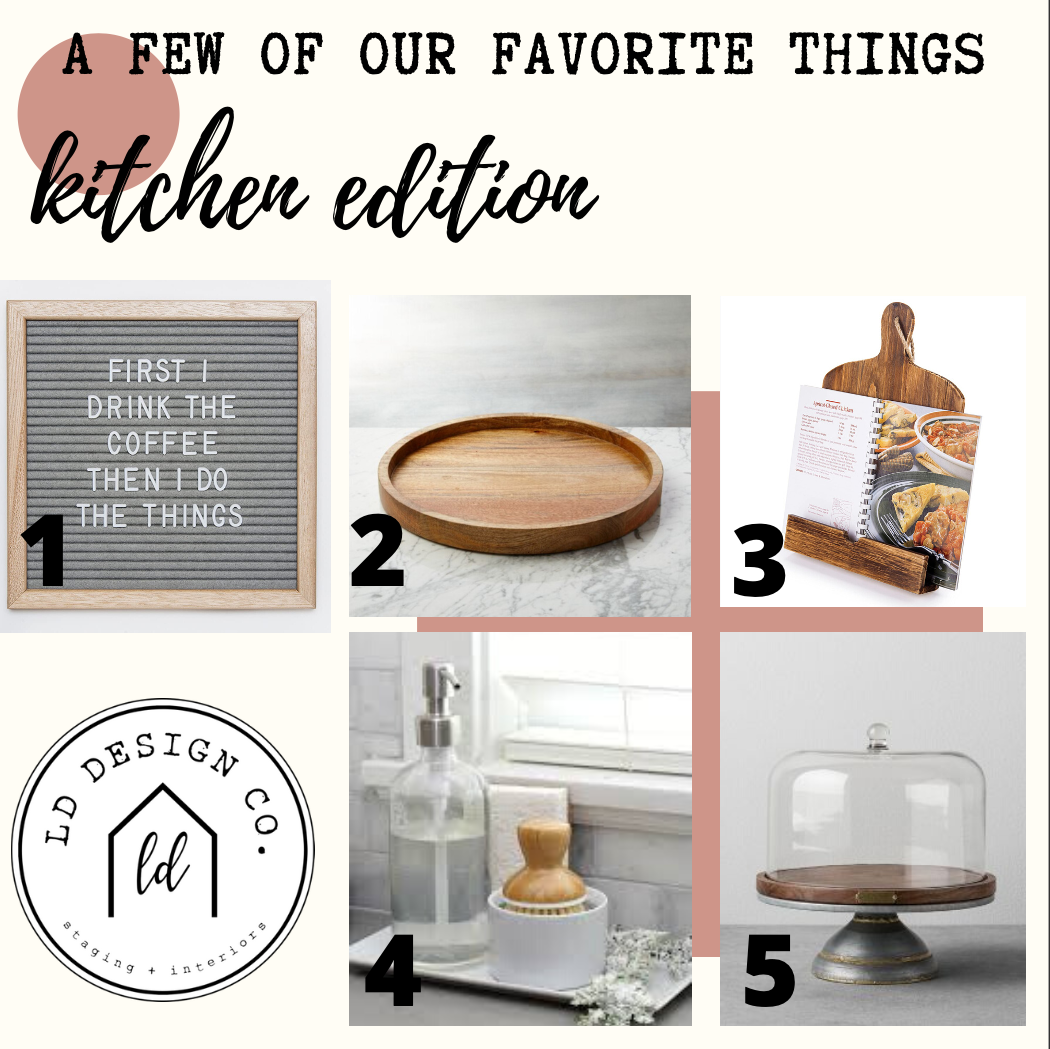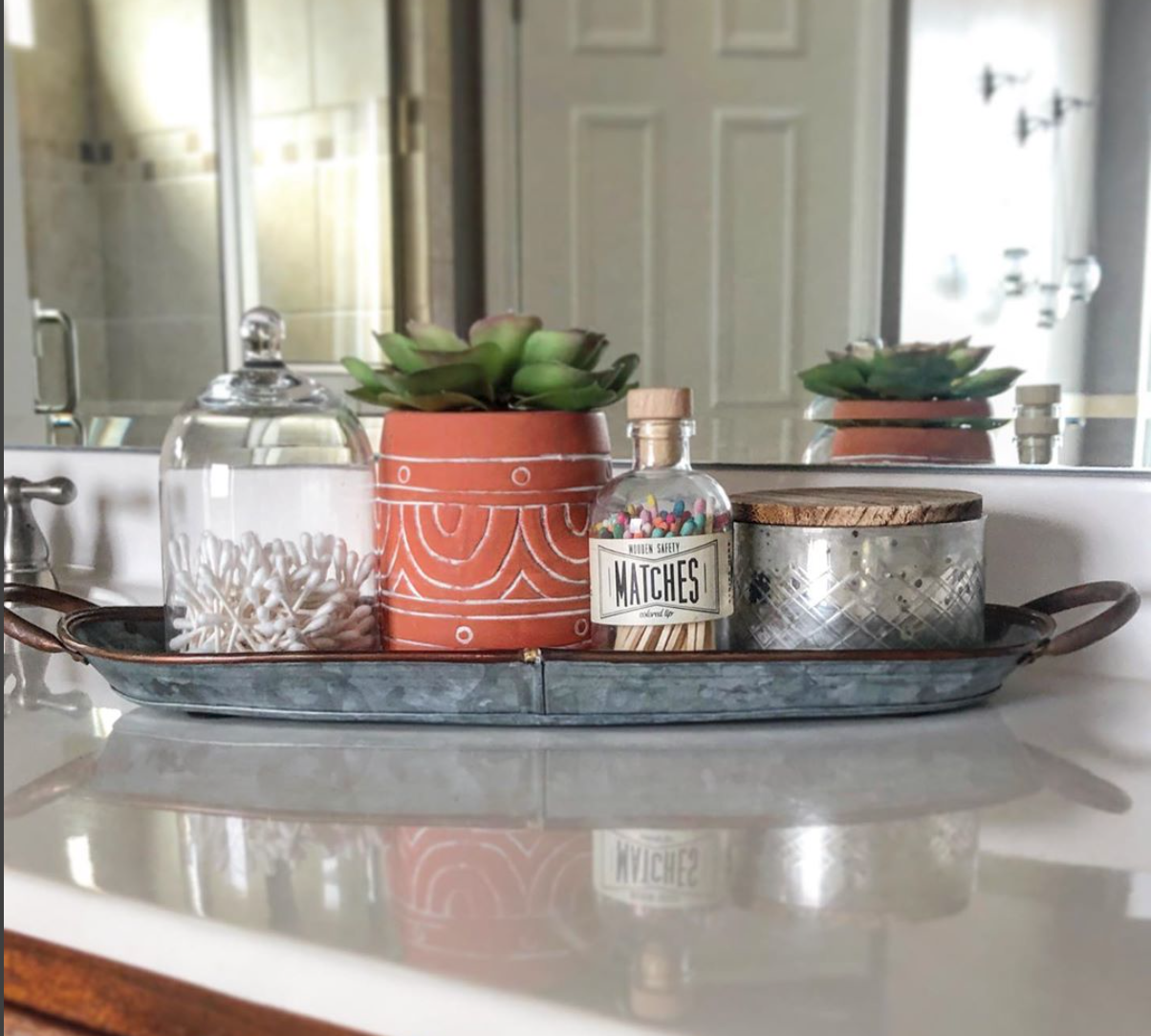We are often asked what our favorite go-to staging and decor pieces are. Well, here are just a few kitchen favorites from our Lead Designer that she says you can’t go without! Whether you have a birthday wish list, some extra summer spending money, or it’s just time to hit the refresh button, add these beauties to your list.
1. Wooden Message Board Sign
Add some fun and personality to your home by changing up the messages on the board. Customize the wording for each holiday, what’s for dinner, a quote, or reminders. The possibilities are endless!
2. Wood Tray
A wood tray is a great, decorative way to gather a few staple items. Create a vignette by throwing on salt and pepper grinders, candles, a bowl of lemons, or a kitchen plant. Use the decorated tray as a great centerpiece or in the corner of your countertop.
3. Cookbook Stand
This go-to, like many others, is stylish and functional, which is a win-win! Display your favorite cook book opened to a comforting family favorite or add a frame with an inspirational quote.
4. Sink caddy
Who knew soap and scrubbers could look beautiful? It’s enough to make you excited about doing the dishes (maybe). Just remember, keep it neutral and fresh such as light wood bamboo scrubbers and glass decorative soap dispensers. Also, be sure to remove those sponges and kitchen towels for staging. To see more differences between staging and redesign click here
5. Cake plate
A bright and inviting piece that's both decorative and functional. Stack with different fruit for a bold, colorful pop or better yet, load it up with fresh baked, warm chocolate chip cookies.




















